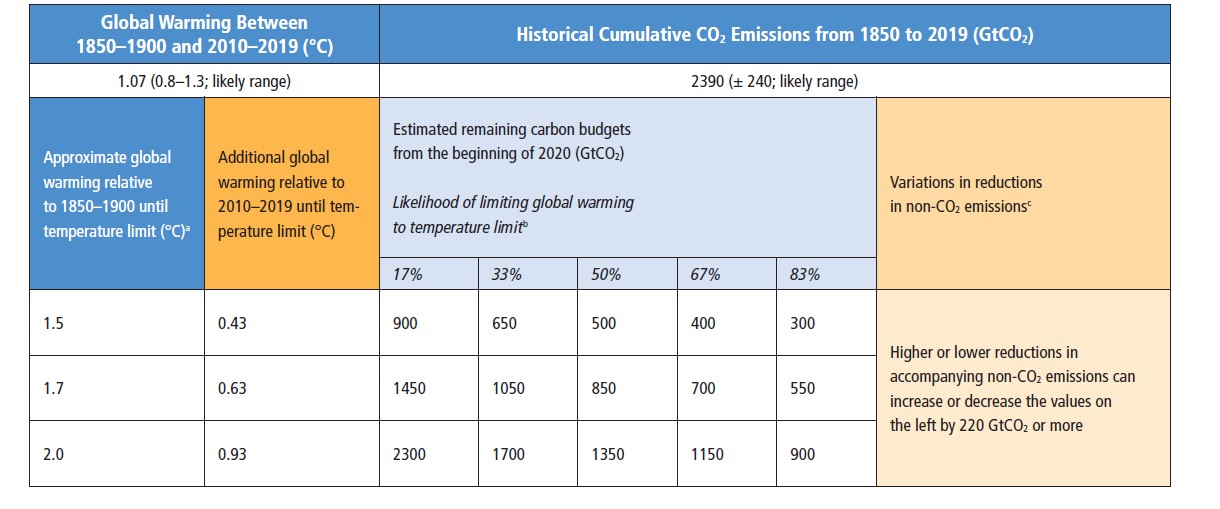The MCC carbon footprint clock shows how much CO2 (carbon dioxide) can be released into the atmosphere to limit global warming to a maximum of 1.5°C and 2°C.
With just one click, you can compare the estimates for the two temperature targets and see how much time is left until the set target is reached.
Carbon clock calculations use data from the Intergovernmental Panel on Climate Change (IPCC) to calculate the carbon footprint. The IPCC last updated its assessment of the remaining carbon budget in the summer of 2021, presenting the first part of its Sixth Assessment Report.
According to the report (and table below), at a 1.5 degree Celsius target, the atmosphere can absorb no more than 400 gigatons (Gt) of CO2. Annual CO2 emissions – from fossil fuel combustion, industrial processes and land-use change – are estimated at 42.2 Gt per year, which equates to 1,337 tonnes per second. At a constant level of emissions, the budget is expected to be spent in less than eight years.

The budget for staying below the 2°C threshold is 1150 Gt and will be exhausted in about 25 years. The budgets are calculated in such a way that the relevant temperature target is very likely to be achieved, i.e. in two-thirds of the climate scenarios considered.
So the clock is ticking, showing how little time is left for political decision makers to take action! This is exactly why we need a timely response to reduce the carbon footprint!
At a glance on the site, you can understand the timeframe for action required for a given policy goal: with just one click, the upper left corner takes you to the 2°C target scenario, and the upper right hand angle to the 1.5° target C. In both cases, the clock shows the remaining carbon budget – and the remaining time. The MCC carbon clock only reflects the remaining CO2 budget; the contribution of other greenhouse gases to global warming is subtracted before calculating this remaining carbon budget.
The carbon budget concept is based on an almost linear relationship between cumulative emissions and temperature rise. However, this does not mean that the earth will necessarily be 1.5⁰C warmer by the time the remaining carbon budget to stay below the 1.5⁰C threshold has been used up. This is due, among other things, to the fact that there is a time lag between the concentration of emissions in the atmosphere and their effect on temperature.
While the carbon clock appears to be an accurate measurement of the time left to ensure climate protection, many uncertainties remain, such as different definitions of the 1.5°C target, as well as different assumptions about climate sensitivity, the extent of global warming actually achieved warming and the future development of other greenhouse gases.
Source: https://www.mcc-berlin.net/en/research/co2-budget.html
Contacts:
Do not hesitate to contact our specialist on email sales@atamiq.com or phone +359886163199


